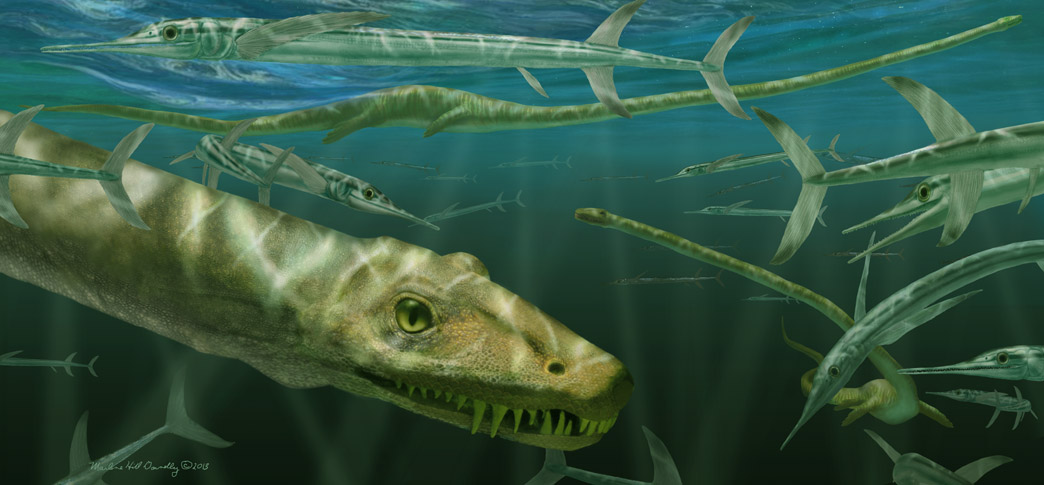(NewsNation) — An international team of scientists discovered fossils of a 16-foot-long aquatic reptile from the Triassic Period of China dating to around 240 million years old.
The snake-like Dinocephalosaurus orientalis boasts 32 separate neck vertebrae — an extremely long neck — and flippered limbs. The fossil also features “exquisitely preserved fishes in its stomach region,” according to National Museums Scotland.
The fossil bears “superficial similarities” but is not related to the famous long-necked plesiosaurs, which only evolved around 40 million years later and inspired the myth of the Loch Ness Monster.
“This discovery allows us to see this remarkable long-necked animal in full for the very first time,” Nick Fraser, keeper of natural sciences at National Museums Scotland, said in a statement. “It is yet one more example of the weird and wonderful world of the Triassic that continues to baffle paleontologists. We are certain that it will capture imaginations across the globe due to its striking appearance, reminiscent of the long and snake-like, mythical Chinese Dragon.”
Although the species was first identified in 2003, the discovery of a more complete specimen in the Guizhou Province of southern China is fully articulated, allowing scientists to depict the creature in full for the first time.
Researchers from Scotland, Germany, America and China have spent ten years studying the fossil at the Institute of Vertebrate Palaeontology and Palaeoanthropology in Beijing, part of the Chinese Academy of Sciences.
“This has been an international effort. Working together with colleagues from the United States of America, the United Kingdom and Europe, we used newly discovered specimens housed at the Chinese Academy of Sciences to build on our existing knowledge of this animal. Among all of the extraordinary finds we have made in the Triassic of Guizhou Province, Dinocephalosaurus probably stands out as the most remarkable,” said Professor Li Chun from the Institute of Vertebrate Paleontology and Paleoanthropology.
The paper describing Dinocephalosaurus orientalis is published in Earth and Environmental Science: Transactions of the Royal Society of Edinburgh.
“This remarkable marine reptile is another example of the stunning fossils that continue to be discovered in China,” said Professor Robert Ellam, editor-in-chief of Transactions and fellow of the Royal Society of Edinburgh.
“As an early-career researcher, it has been an incredible experience to contribute to these significant findings,” said Stephan Spiekman, a postdoctoral researcher based at the Stuttgart State Museum of Natural History. “We hope that our future research will help us understand more about the evolution of this group of animals, and particularly how the elongate neck functioned.”
TMX contributed to this report.



